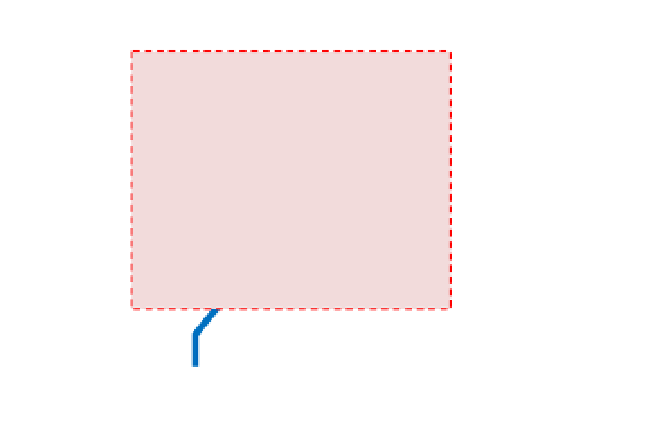Image Processing Reference
In-Depth Information
the variable complex filter and the adaptive algorithm. Fig. 8 shows such a system based on
a variable complex filter section designated LS1 (Low Sensitivity). The variable complex LS1
filter changes the central frequency and bandwidth independently (Iliev et al, 2002), (Iliev et
al, 2006). The central frequency can be tuned by trimming the coefficient , whereas the
single coefficient adjusts the bandwidth. The LS1 variable complex filter has two very
important advantages: firstly, an extremely low passband sensitivity, which offers resistance
to quantization effects and secondly, independent control of both central frequency and
bandwidth over a wide frequency range.
The adaptive complex system (Fig.8) has a complex input
x
(
n
)=
x
R
(
n
)+
jx
I
(
n
) and provides
both band-pass (BP) and band-stop (BS) complex filtering. The real and imaginary parts of
the BP filter are respectively
y
R
(
n
) and
y
I
(
n
), whilst those of the BS filter are
e
R
(
n
) and
e
I
(
n
).
The cost-function is the power of the BP/BS filter's output signal.
The filter coefficient , responsible for the central frequency, is updated by applying an
adaptive algorithm, for example LMS (Least Mean Square):
(
n
)
(
n
)
[ (
e n y
)
(
n
)]
.
(11)
The step size controls the speed of convergence, () denotes complex-conjugate,
y
(
n
) is the
derivative of complex BP filter output
y
(
n
) with respect to the coefficient, which is subject to
adaptation.
+
e
R
(
n
)
Adaptive Complex Filter
x
R
(
n
)
cos
z
-1
y
R
(
n
)
sin
sin
y
I
(
n
)
z
-1
cos
x
I
(
n
)
+
e
I
(
n
)
Adaptive
Algoritm
Fig. 8. Block-diagram of an LS1-based adaptive complex system
In order to ensure the stability of the adaptive algorithm, the range of the step size should
be set according to (Douglas, 1999):
P
N
0
.
(11)
2
where
N
is the filter order, σ
2
is the power of the signal
y
(
n
) and
P
is a constant which
depends on the statistical characteristics of the input signal. In most practical situations,
P
is
approximately equal to 0.1.


















































































